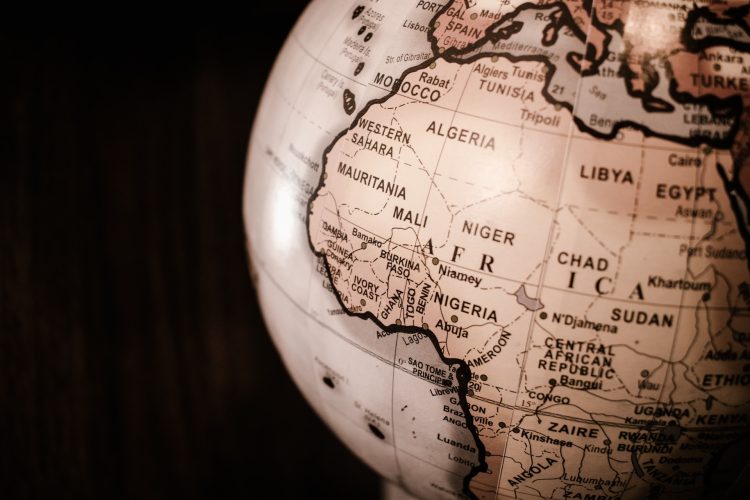Infrastructure development is a key driver for progress across the African continent and a critical enabler for productivity and sustainable economic growth. It contributes significantly to human development, poverty reduction, and the attainment of the Millennium Development Goals (MDGs). According to the African Development Bank.
African Infrastructure Development Projects for the Next 10 Years
There are several infrastructure development projects planned in Africa for the next 10 years. Here are some examples:
Trans-African Highway: The African Union is working on the Trans-African Highway project, which aims to connect all the major cities and countries in Africa through a network of highways. The project is expected to improve trade and economic growth in the region.
Grand Ethiopian Renaissance Dam: The Grand Ethiopian Renaissance Dam is a hydroelectric dam project on the Blue Nile river in Ethiopia. It is expected to provide electricity to millions of people in Ethiopia and neighboring countries.
Mombasa-Nairobi Standard Gauge Railway: The Mombasa-Nairobi Standard Gauge Railway is a modern railway system that connects the port of Mombasa to Nairobi, the capital city of Kenya. The project is expected to reduce transportation costs and improve efficiency in the region.
Inga Dam Project: The Inga Dam Project is a hydroelectric dam project on the Congo River in the Democratic Republic of Congo. It is expected to provide electricity to several African countries, including South Africa, and could potentially become the largest hydroelectric power station in the world.
Lagos-Calabar Coastal Railway: The Lagos-Calabar Coastal Railway is a railway project that will connect the city of Lagos in Nigeria to Calabar, a coastal city in the southeastern part of the country. The project is expected to improve transportation and trade between the two regions.
Nairobi-Mombasa Highway Expansion: The Nairobi-Mombasa Highway Expansion project aims to expand and upgrade the existing highway that connects Nairobi to Mombasa in Kenya. The project is expected to improve transportation and reduce travel time between the two cities.
Cairo Metro Line 4: The Cairo Metro Line 4 project is a new subway line that will connect the suburbs of Cairo to the city center. The project is expected to improve transportation and reduce traffic congestion in the city.
These are just a few examples of the infrastructure development projects planned in Africa for the next 10 years. These projects are expected to improve transportation, energy, and communication in the region, and contribute to the overall economic development of the continent.

How much funding is needed for African Infrastructure Development Projects for the next 10 years
Estimating the exact amount of funding needed for African infrastructure development projects for the next 10 years is difficult, as it depends on various factors such as the scope and scale of the projects, the countries involved, and the sources of funding.
However, the African Development Bank estimates that Africa needs about $130-170 billion per year to meet its infrastructure needs, including power, water and sanitation, transport, and ICT. This estimate is based on the continent’s projected population growth and the need to address infrastructure deficits.
To achieve this level of funding, African countries will need to rely on a mix of financing sources, including public and private investment, international aid, and partnerships with multilateral development banks such as the African Development Bank, World Bank, and International Monetary Fund.
In addition, some African countries are taking innovative approaches to infrastructure financing, such as public-private partnerships (PPPs), green bonds, and sovereign wealth funds. These approaches can help attract private investment and diversify funding sources for infrastructure projects.
Overall, while the funding needed for African infrastructure development projects for the next 10 years is significant, there are various funding sources and approaches available to support these projects and help drive economic growth and development in the region.

What are the benefits of African Infrastructure Development Projects?
African infrastructure development projects can bring a wide range of benefits to the continent, including:
Economic Growth: Infrastructure development projects can stimulate economic growth by improving transportation, energy, and communication systems. This can lead to increased trade, investment, and job creation, which can contribute to poverty reduction and economic development.
Improved Access to Basic Services: Infrastructure development projects can also improve access to basic services such as water and sanitation, healthcare, and education. This can help to reduce inequalities and improve the quality of life for people in Africa.
Regional Integration: Infrastructure development projects can help to connect different regions of Africa, promote cross-border trade, and improve regional economic integration. This can lead to greater political stability and cooperation among African countries.
Environmental Sustainability: Infrastructure development projects can be designed to promote environmental sustainability by reducing carbon emissions, improving waste management, and protecting natural resources. This can help to address climate change and promote sustainable development.
Improved Disaster Resilience: Infrastructure development projects can also improve disaster resilience by building more resilient infrastructure and improving emergency response systems. This can help to reduce the impact of natural disasters such as floods, droughts, and earthquakes on vulnerable communities in Africa.
Overall, infrastructure development projects can bring many benefits to Africa and contribute to the continent’s economic growth and sustainable development.
Photo by James Wiseman on Unsplash

Leave a Reply